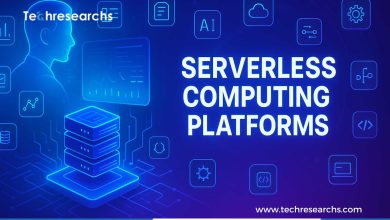IDS and IPS in the Cloud: Exploring Other Viable Security Options

Ids And Ips: When it comes to security, cloud computing has become a hot topic. The question is: Is it safe to store sensitive data in the cloud?
Cloud computing is a network access model that allows for ubiquitous, convenient, on-demand network access to a shared pool of configurable computing resources (e.g., networks, servers, storage, applications, and services) It may be installed and removed quickly with minimal administrative effort or service provider involvement.
There are two main types of cloud computing: Infrastructure as a Service (IaaS), where the cloud provides the hardware and software infrastructure required to run applications, and Platform as a Service (PaaS), where the provider offers an application development platform.
Why Use Ids and Ips in The Cloud?
Security:
IDS/IPS solutions provide security at the network level. These systems monitor traffic entering and leaving the network. If any suspicious activity is detected, they block the connection before it reaches the host.
Performance:
IDS/IPS solutions help improve performance by reducing bandwidth usage and latency. By blocking connections before they reach the server, less data is transferred over the network.
Scalability:
IDS/IPS solutions allow administrators to scale their infrastructure easily without having to worry about adding additional servers or hardware.
Cost:
IDS/IPS solutions offer cost savings by eliminating the need for expensive hardware and software licenses.
Compliance:
IDS/IPS solutions enable organizations to comply with regulations and industry standards.
Pros And Cons of Using Ids and Ips in a Cloud Environment.
Pros
- Allows for more control over the environment of your server (e.g., temperature, humidity)
- Can be set up to automatically scale based on CPU usage
- Can be set to monitor network traffic and alert if any unusual activity occurs.
- Can be set for automatic failover.
- Can be set as a high-priority service.
- Can be set not to start at boot time.
- Can be set in user mode or kernel mode.
- Can be set with a custom command line.
- Can be set on demand.
- Can be set without root privileges.
- Can be set via API.
- Can be set per application.
- Can be set based on IP address.
Cons:
Not Allowed by Default:
Ids And Ips are not allowed by default in many cloud environments. You need to add them manually to your network settings. If you have an existing VPC (Virtual Private Cloud) then you may need to contact AWS Support to get access to these features.
Requires Additional Hardware:
The hardware requirements for running IDS/IPS are higher than traditional IPS devices. Your device requires at least 2GB RAM and 8GB storage space. These requirements are much higher than what is required for a typical IPS device.
No Monitoring Capabilities:
Ids And Ips do not monitor traffic. They only detect attacks. To use Ids And Ips effectively, you need to configure your firewall rules to allow traffic to pass through.
Limited Scope:
IDS/IPS only works on IP addresses. So if you have a VPN connection, you cannot use Ids And Ips to protect those connections.
Expensive:
IDS/IPS are expensive compared to traditional IPS devices. A typical IPS device costs around $100-$200. An IDS/IPS device can cost anywhere between $500-$1000 per year depending on how many alerts you receive.
Security Issues:
Ids And Ips do have security issues. They rely on signatures to identify threats. If a threat changes its signature, the system won’t know about it. Also, they don’t provide any information about the attack. They just inform you that something occurred.
Lack of Training:
There is no training available for Ids and Ips. There are some online courses available, but they are not free.
The Future of Ids and Ips in Cloud Environments.
What is the Future of Ids and Ips?
IDS/IPS (Intrusion Detection Systems) have been around since the early 90’s. Back then they were mainly used in network security applications.
Over time, IPS became more popular due to its ability to detect malware and viruses. In recent years, we’ve seen the rise of cloud computing, where data is stored remotely.
As a result, many organizations are looking at using these technologies to protect their data.
Why use Cloud-based Intrusion Detection Systems?
Cloud-based intrusion detection systems provide several advantages over traditional on-premise solutions. These include:
- Cost savings – By moving the solution to the cloud, companies can reduce upfront costs associated with hardware and software licenses. Additionally, they can avoid the need to purchase additional servers and storage capacity.
- Scalability – Since the solution is hosted in the cloud, it can scale up or down based on demand. This means that if traffic increases, the system can automatically add more processing power without having to buy additional hardware.
- Flexibility – A cloud-based solution provides greater flexibility than on-premises solutions. Companies can easily move workloads between different locations, including between physical and virtual machines.
- Security – By storing sensitive information in the cloud, companies can take advantage of the added protection provided by the cloud infrastructure.
How do I choose an Ids and Ips Solution?
There are two primary factors to consider when choosing an Ids and Ips solution:
- Performance – An Ids and Ips solution should perform well enough to meet the requirements of your organization. If your company requires high performance, look for a solution that offers both CPU and memory optimization.
- Features – You’ll want to find an IDS/IPS that includes features that fit your business’s specific needs. Look for a solution that supports application layer firewall, web gateway, and content filtering.
Ids And Ips technology have been around for decades, and it’s still one of the most effective ways to protect against network attacks. But with the rise of cloud computing, many organizations are looking into other options, including cloud-based IDS/IPS solutions.



